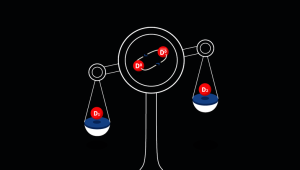Quantum theory is a set of theories derived from quantum hypotheses and classical physics. Its themes include quantization of energy and the wave-particle nature of some matter. One of its major flaws is its lack of universality and coherence, as well as a mathematical system with universal terms. Despite the limitations of the theory, it remains an effective method for explaining natural phenomena and understanding the universe. Its most notable flaw is the absence of a common definition for the nature of matter.
Quantum Theory Unveiled

The fundamental idea of quantum theory is the existence of multiple states and locations. As a result, a single atom can be in more than one location at the same time. This property is known as superposition. In practice, this means that an electron can be in two places at the same time. Its position can be described as a probability distribution within a region, with each location having a different probability. Once it has entered an orbit, it can then jump to another location.
In addition to its theoretical foundations, quantum theory has applications in many fields. For instance, it explains the behavior of many biological and physical phenomena. For example, quantum theory describes the properties of macromolecule DNA, which can be thought of as a quantum system. It also explains many biological phenomena, such as DNA replication and cell division. The fundamental principle of quantum theory is that it cannot predict exact events, but it can describe probabilities. Thus, quantum theory is essential for understanding many aspects of our lives.
Unraveling Particle Interactions

QFT can also help scientists understand the behavior of electrons and photons. The interaction of particles with each other is crucial for experiments to be accurate. It is only through this interaction that a particle can interact with other particles. It is therefore crucial to consider the interactions in particle colliders and other physical experiments. For instance, scattering experiments are directly connected with QFT and the S-matrix. The S-matrix contains information about the scattering cross-sections. Its calculation requires a Hamiltonian formalism, which introduces the Lagrangian density.
The philosophy of QM is a complicated one. It is a complex theory and involves many different models. Despite its complexity, it is a powerful tool for interpreting complex data. For instance, it can be used to understand quantum mechanics, which is a branch of science that can explain the behavior of objects and systems. This theory is also relevant in philosophy. Nonetheless, it has been shown that a theory can change the nature of physical entities.
QFT has many implications for our understanding of the physical world. One of its main features is that it gives us a picture of reality that differs from what we would expect from classical particle and field theories. For example, quantum mechanics has metaphysical implications. It suggests that there is more to reality than meets the eye. As a result, it is vital to understand the metaphysics behind the theory. It is a necessary step to understand how quantum systems work.

